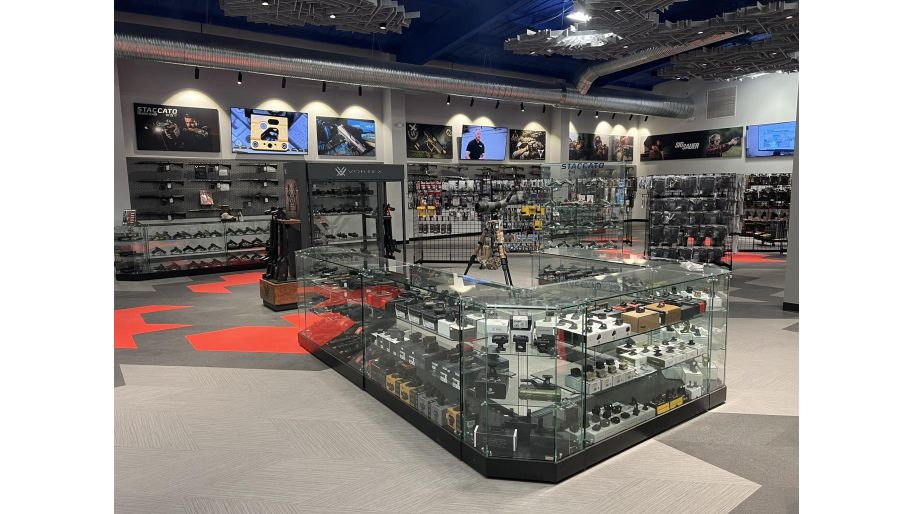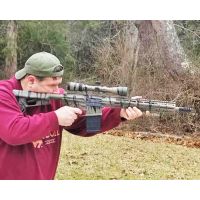If you’ve ever purchased a firearm, chances are you’ve dealt with an FFL (Federal Firearms License or, also commonly, Licensee). This abbreviation is scattered throughout gun media, whether it be print, audio, or video, but no one ever seems to explain what it is. You may also have run across the term “SOT,” perhaps in relation to an FFL. Gun people throw around abbreviations, acronyms, and jargon like there’s no tomorrow. We often just assume everyone else knows what we mean.
Cover above: the inside of Rainier Arms OKC (an Oklahoma City FFL).
But I remember what it was like being new to the gun world and trying to process all that stuff. I remember feeling dumb asking a friend what a “BCG” was. But if you don’t know, you don’t know.
So, here’s a quick breakdown of an FFL vs. FFL/SOT. Hopefully, we can at least settle that for you. It’s really not that difficult.
FFL Meaning: Which One?
“FFL” stands for Federal Firearms License or Federal Firearms Licensee (also referred to colloquially as an FFL holder or FFL dealer). Telling the difference requires the proper context. I can say, for instance, that I want to apply for an FFL. That means I want a license to make, sell, or import guns, ammunition, and/or “destructive devices.”
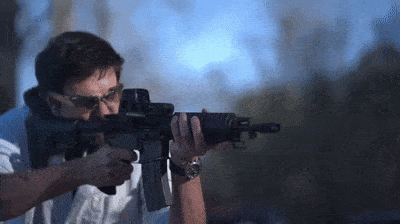
In simplest terms, a fully automatic firearm, unlike its semi-auto cousins, must be transferred through an FFL/SOT. Semi-auto firearms require a standard FFL (Federal Firearms Licensee). Original video via the "Slow Mo Guys."
We’ll get to those in a moment.
Or, I can direct someone to send a firearm to my FFL, meaning the dealer through whom I want to transfer the firearm (properly referred to as an FFL transfer). In that case, I’m referring to a Federal Firearms Licensee. The License is issued by the federal Bureau of Alcohol, Tobacco, Firearms, and Explosives, or ATF. ATF also regulates the license holders. The Federal Firearms Act of 1938 (FFA) established the requirement for an FFL to deal in firearms.
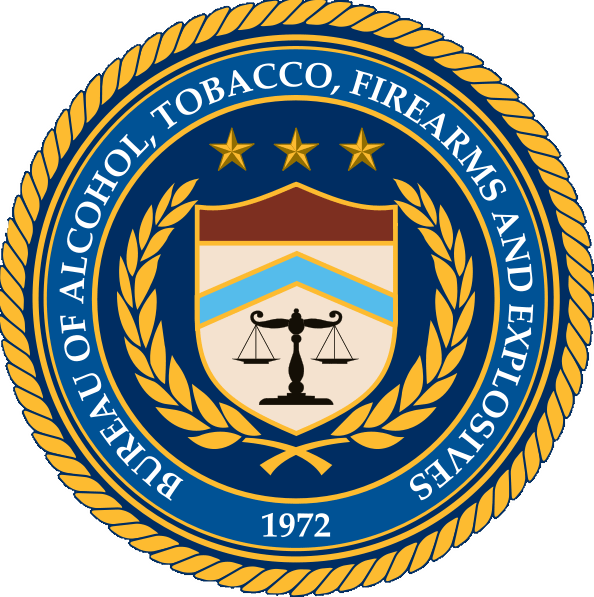
The ATF issues Federal Firearms Licenses and regulates Licensees; see Federal Firearms Licensing Center. (ATF.gov)
There are nine different types of Federal Firearms Licenses, and thus, there are nine different types of Federal Firearms Licensees. We don’t need much detail, so we’ll list each FFL type quickly, with any necessary explanations to follow.
FFL License Type 01-11 (but skipping a couple...)
- (Type 01) Firearms dealer or Gunsmith
- (Type 02) Pawnbroker
- (Type 03) Firearms Collector
- (Type 06) Ammunition Manufacturer
- (Type 07) Firearms and Ammunition Manufacturer
- (Type 08) Firearms Importer
- (Type 09) "Destructive Devices" Dealer
- (Type 10) "Destructive Devices" Manufacturer
- (Type 11) "Destructive Devices" Importer
I have no idea why there aren’t Type 04 and Type 05 FFLs. It’s probably some super-secret government agency thing like Q Branch.
Onward!
Basically, FFLs allow the dealing, manufacturing, or importing of what are called “Title I” firearms as defined by the 1968 Gun Control Act (GCA). Title I firearms are standard rifles, pistols, and shotguns. They do not include automatic weapons of any kind.
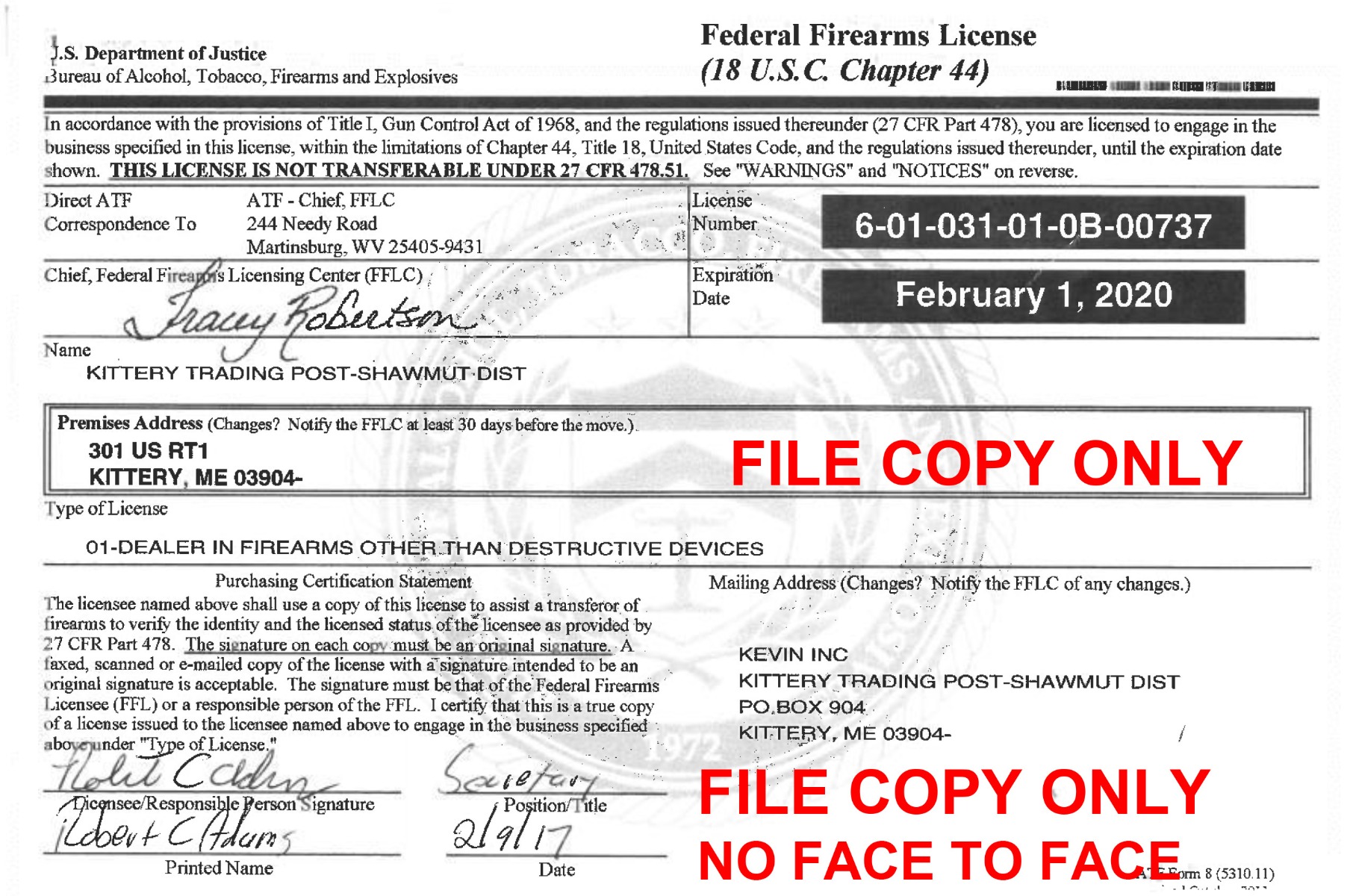
A Federal Firearms License or FFL. (via lady-patriots.com)
The term “destructive devices” refers to such things as hand grenades and certain ammunition types.
Let’s clarify a couple of other items. A “Dealer FFL” allows the holder to buy and sell guns as part of a business. In fact, the proper ATF term for those who need an FFL is “engaged in the business.” Gunsmiths also hold this type of license.
Type 06 License holders can manufacture and deal in ammunition but not firearms.
A Type 07 license is required for both.
Type 03 licensees cannot “engage in the business.” They can only acquire “Curio & Relic” (C&R) firearms for their collection. C&R firearms are another article entirely; think museum-type guns.
Type 08 and Type 11 Importer FFLs may also “engage in the business” of selling firearms.
FFL/SOT
A SOT is a specific type of FFL. But an SOT is not a separate license. In fact, it’s not a license at all. Rather, a SOT is a certain category of federal taxpayer known as a Special Occupational Taxpayer.
I’ll explain the tax thing momentarily after I briefly cover what a SOT can do. There are three classes of SOT:
- Class 1 SOT: NFA Firearms Importer
- Class 2 SOT: NFA Firearms Manufacturer
- Class 3 SOT: NFA Firearms Dealer
NFA
There’s another acronym for you. “NFA” stands for National Firearms Act.
Congress passed the NFA in 1934 to regulate certain classes of firearms, including automatic weapons, short-barreled rifles and shotguns, suppressors, “destructive devices,” and certain oddball weapons called “AOWs.” The latter acronym stands for Any Other Weapon.
Suppressors count as firearms under the NFA.
The NFA, however, is not a gun control law. It’s a tax law.
The government understood that the Second Amendment prohibited outlawing those items. So, Congress imposed a special tax to be paid before such an item could be purchased. That’s the $200 “tax stamp” that you may have heard about. 200 bucks was a hefty sum in 1934. It would be equal to $4661.67 in April 2024 money.
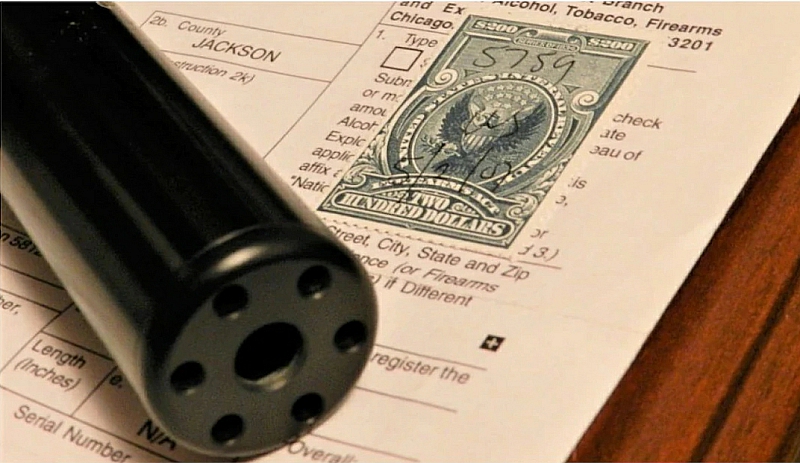
NFA items require a $200 tax stamp, which is why SOTs are tax classifications, not licenses.
The goal was to make those items so expensive that few people could afford them. Luckily for us, the NFA didn’t account for inflation, and the tax rate has remained at $200. SOTs also pay the $200 tax on their end, so the government actually collects $400 per NFA item.
So, since the NFA is a tax law, FFL SOTs are classified as special taxpayers who are authorized to import, manufacture, or deal in NFA items.
But what makes them “special,” other than the NFA privileges?
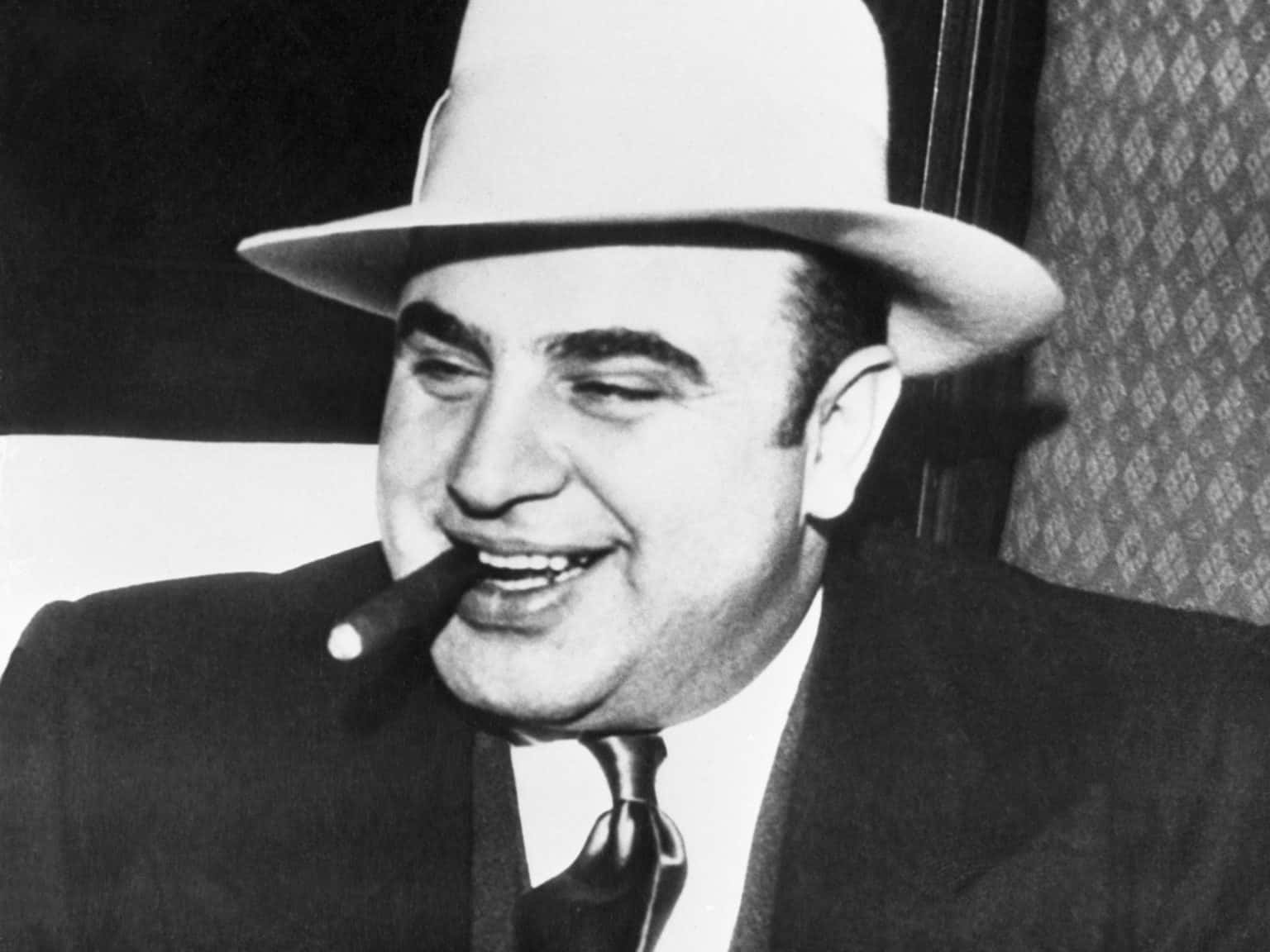
Al Capone’s 1929 St. Valentine’s Day Massacre resulted in Congress passing the National Firearms Act five years later. (Wiki commons)
Why the SOT part of an FFL/SOT?
Paying $200 for each NFA item imported, manufactured, or sold would get prohibitively expensive very quickly, even in 2024 dollars. The SOT status allows a business (SOT holder) to pay an annual tax of $1,000 to import or manufacture such items (or $500 to sell them).
SOT importers and manufacturers whose gross receipts were less than $500,000 the previous year pay only $500. That’s obviously a much better deal than paying by the item a la carte style.
There is some confusion, even among experienced gun people, about the proper term for NFA firearms. You may hear people refer to them as “Class 3” firearms. That is incorrect and comes from the fact that such weapons can only be purchased through a Class 3 SOT FFL. In fact, those weapons originally came from a Class 1 or Class 2 SOT before the Class 3 SOT sells them.
NFA Item: An NFA item (or NFA Firearm) is one that is regulated by the National Firearms Act of 1934. It is something that requires registration with the federal government. NFA items include fully automatic firearms (properly referred to as a machine gun, aka select-fire weapons), rifles and shotguns with an overall length of less than 26 inches, rifles with a barrel under 16 inches, shotguns with a barrel under 18 inches, and suppressors (aka silencers). The Gun Control Act of 1968 added "destructive devices" (qv) to the NFA; this includes firearms other than most shotguns chambered in more than .50 caliber, as well as the more obvious category of explosive materials. When in doubt, always perform due diligence. Actually, perform due diligence even if you're not in doubt. The NFA has many vagaries, so if you're wondering about specific items not obviously lumped into a broad category (i.e., armor piercing ammunition, "Dragons Breath" rounds, or, rotary shotguns, and even - counter-intuitively - some semi-auto weapons. The ins and outs of an NFA item are very litigious and are too complex to go into greater detail here.
The proper term for NFA firearms is “Type II,” as opposed to the aforementioned Type I firearms. Interestingly, the “Type II” label was created in 1934 as part of the NFA. “Type I” didn’t come about until the 1968 GCA. Don’t ask me to explain why governments do certain things.
I know I’ve tossed out acronyms like a tennis ball machine, so let’s recap:
- FFL: Federal Firearms License or Federal Firearms Licensee (remember the context).
- SOT: Special Occupational Taxpayer.
- ATF: Bureau of Alcohol, Tobacco, Firearms, and Explosives.
- FFA: The Federal Firearms Act of 1938.
- FFA: The Federal Firearms Act of 1938.
- GCA: The Gun Control Act of 1968.
- C&R: Curio & Relic. This can refer to a Type 03 FFL or a firearm.
- AOW: Any Other Weapon regulated by the NFA.
Here are a couple more that may be helpful in this context:
- SBR: Short-Barreled Rifle as defined by the NFA.
- SBS: Short-Barreled Shotgun as defined by the NFA.
Just to show that I’m not as ignorant as I used to be, the "BCG" mentioned before stands for Bolt Carrier Group, a collection of parts in AR-15, M-16, and M-4 rifles. But you probably already know that.o
Finally, if you don’t know what “Q Branch” is, I can’t help you. It’s classified. Access to that information requires a certain numerical designation, which comes with its own set of qualifications.
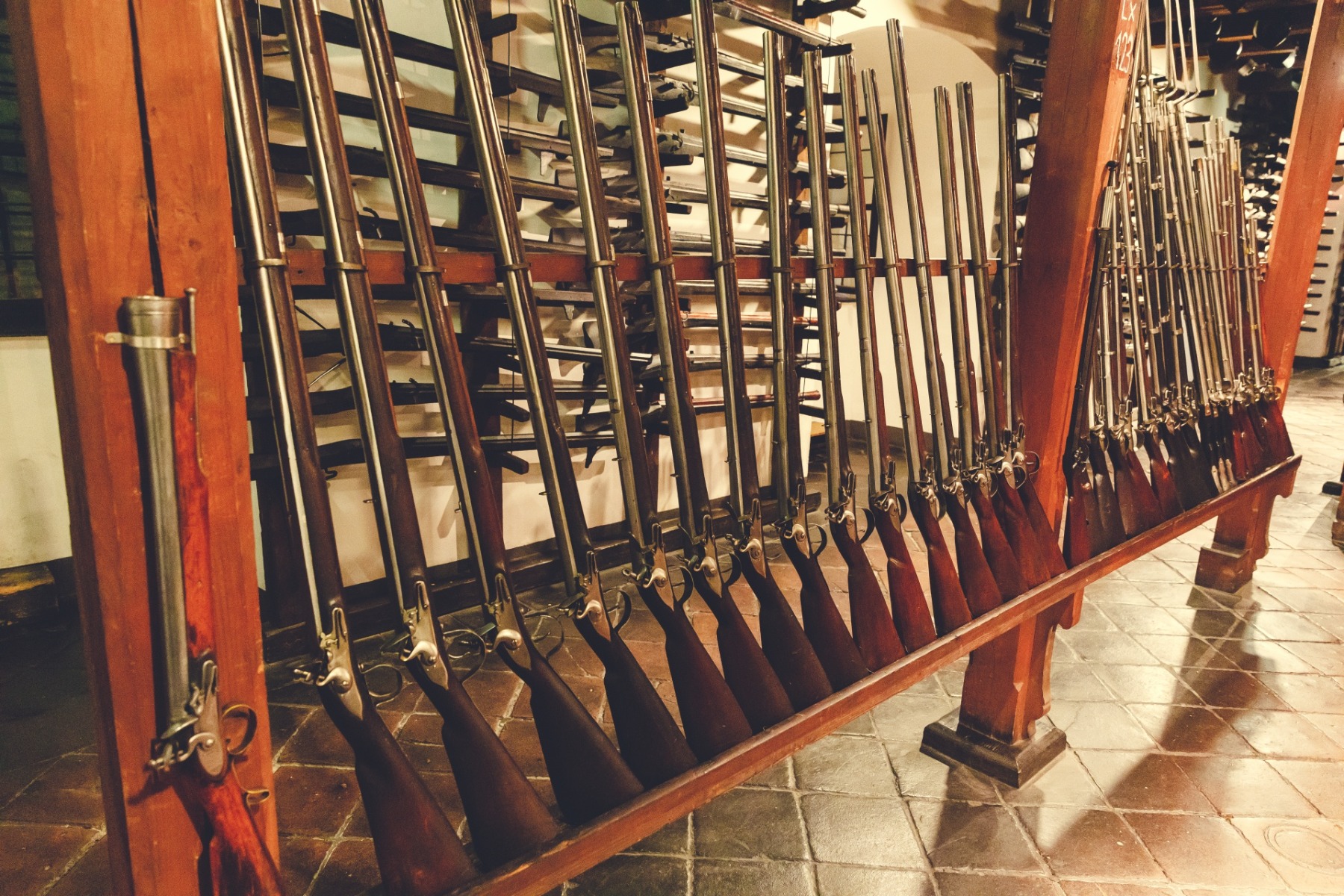
These muskets are all C&R firearms. (publicdomainpictures.net)
Federal Firearms License: FFL vs. FFL/SOT
Hopefully, we’ve cleared up any confusion about FFLs and SOTs. Remember that all Special Occupational Taxpayers are Federal Firearms Licensees, but not all Federal Firearms Licensees are Special Occupational Taxpayers. Just know who you need to see about certain items, understand what they do, and you’re golden.
Whichever acronym you choose will help you from there.
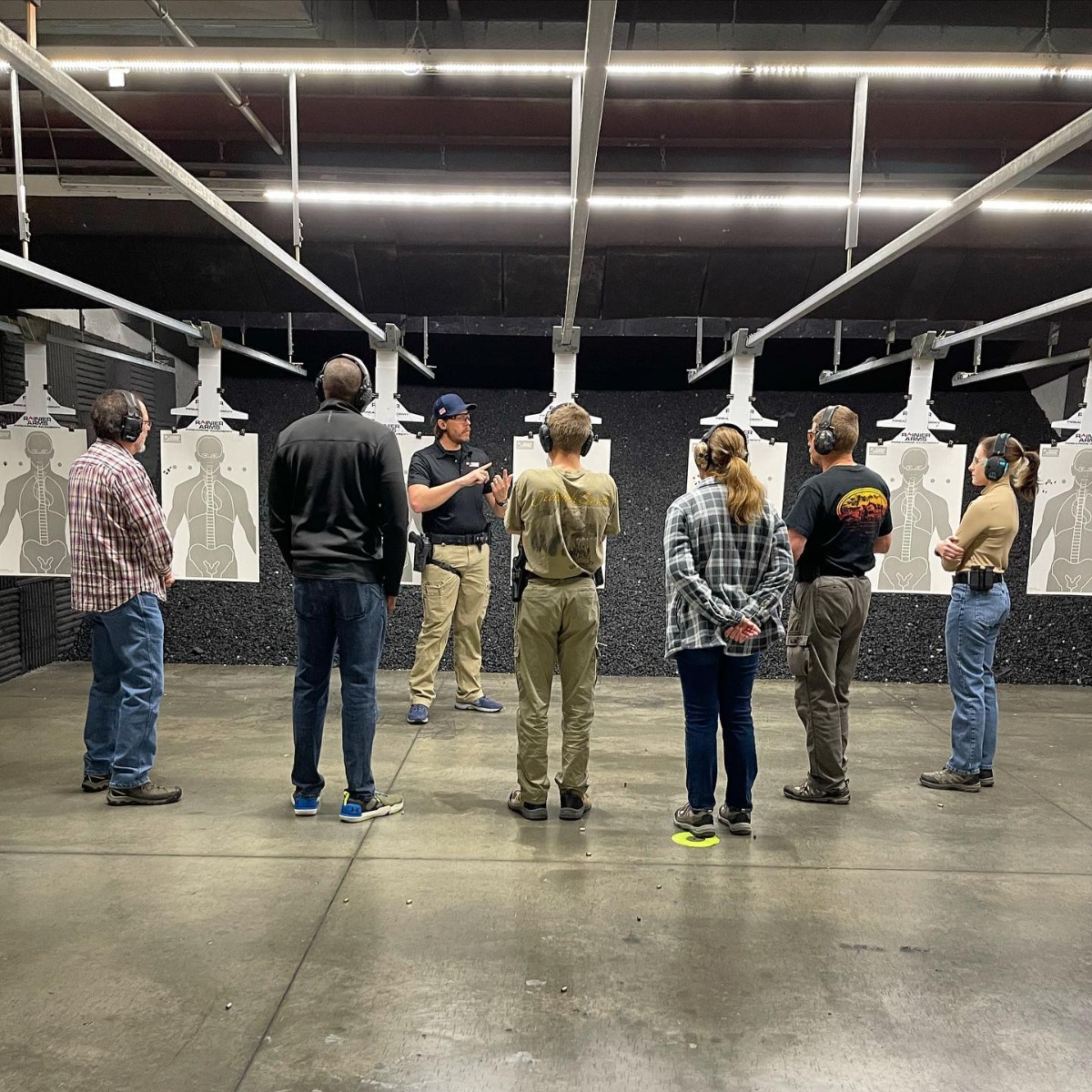
The indoor range at Rainier Arms Firearms Academy; RAFA is a Wichita, KS, FFL.

